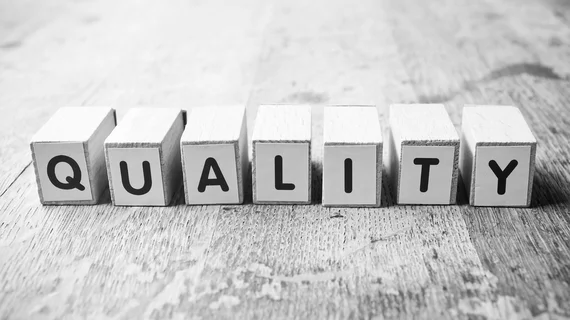Targeting a new quality challenge in radiology: CT repeat rates within the same examination
Numerous studies have explored challenges with delivering multiple unnecessary CT scans to the same patient, such as before and after transfer to a trauma center. But experts from one academic institution are advocating for a new quality metric that would target repeat computed tomography imaging during the same singular examination.
The University of Wisconsin–Madison physicists recently investigated this topic, analyzing CT repeat rates across nearly 104,000 exams performed at several institutions. Overall rates landed low at about 1.4%. But experts noted that within CT pulmonary angiography, in particular, technologists repeated upward of 11.2% of scans, subjecting patients to unnecessary radiation exposure and costs.
Common reasons for this imaging overuse could include anything from patient mispositioning, poor contrast timing, patient motion or artifacts. Timothy Szczykutowicz, PhD, and colleagues see opportunity for quality improvement to address this issue, they explained Tuesday in JACR.
“Although some repeated imaging is necessary to obtain images of diagnostic quality, avoidable repeats are an unnecessary source of patient exposure, a waste of resources, and a detriment to patient satisfaction,” corresponding author Szczykutowicz, with UW’s Department of Medical Physics, and co-authors wrote March 16. “There is clear potential for both quality assurance and improvement using [reject rate analysis] in CT, yet, as far as we are aware, it is not currently recommended by any professional associations or regulatory bodies,” they added later.
To back their argument, scientists conducted a retrospective study, applying an algorithm to analyze CT repeat rates across five institutions over a two-year period beginning in July 2017. Those included both rural and city community hospitals, urban and suburban academic medical centers, and a busy outpatient clinic. Out of a tally of 103,752 exams, 1.4% (or 1,447) contained a repeated helical scan. Overall repeat rates ranged from 0.8% to 1.8%.
Looking specifically at CT pulmonary angiography—which investigators hypothesized would have a high repeat rate, due to difficulties diagnosing pulmonary embolism—the numbers leapt. For large patients, CTPA rates ranged from 3% to 11.2%, and the odds of a duplicate were on average about 4.8 times higher for large- compared to medium-patient protocols, the authors determined. Repeat rates in pulmonary angiography imaging, in fact, were elevated relative to all other types of CT across 4 of the 5 institutions, with “strong evidence of an effect” at two of the institutions.
Szczykutowicz et al. did not attempt to study reasons for these differences. But from speaking with CT managers and technologists, they ascertained several possibilities, such as variability in contrast injection practices. They assumed that repeat rates were due to inferior practice, given these varying methods of delivering IV agents. But the authors admitted that sometimes additional scans are justified and this topic warrants further investigation.
“For example, motion artifacts or a poor contrast bolus can lead to a nondiagnostic examination and often can be rectified by repeating the scan,” the authors noted. “Therefore, an unusually low rate of repeat scanning should be viewed with some caution, particularly in an environment in which patient noncompliance is more common, such as the emergency department.”
You can read more about their investigation in the Journal of the American College of Radiology here.

